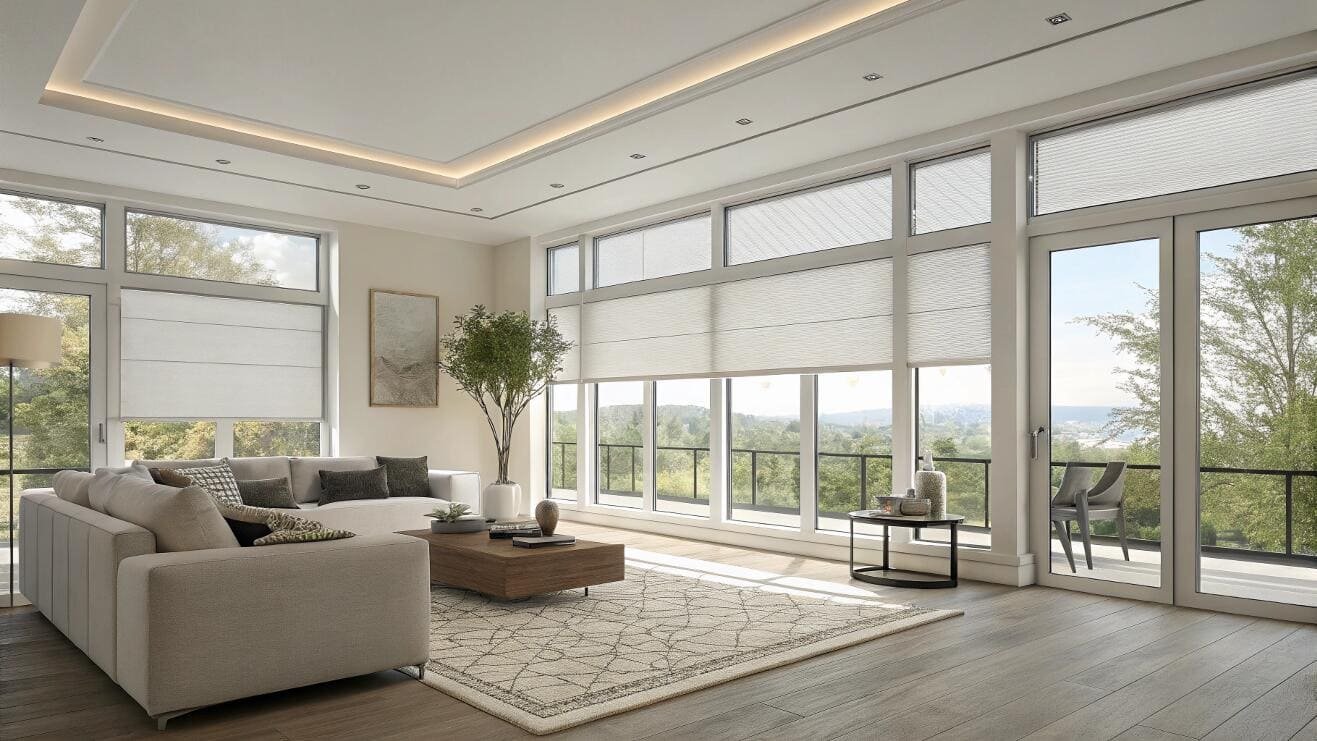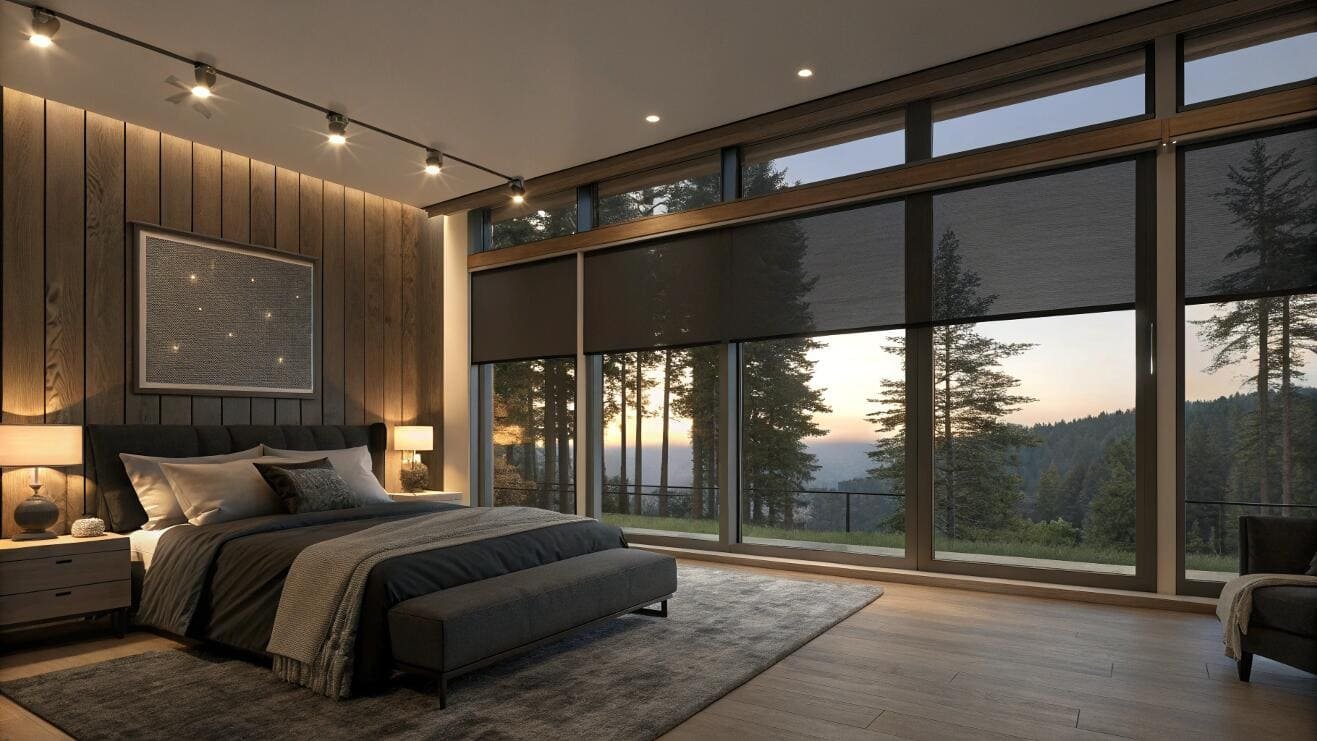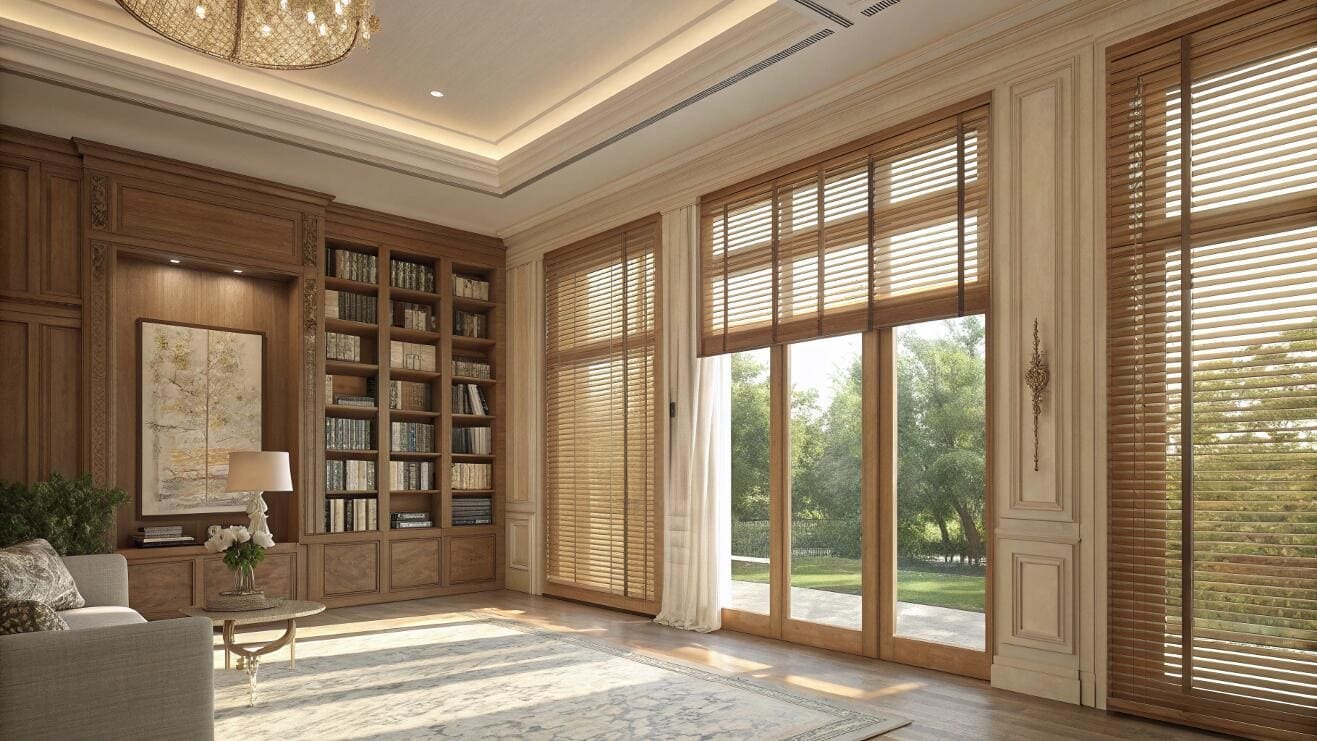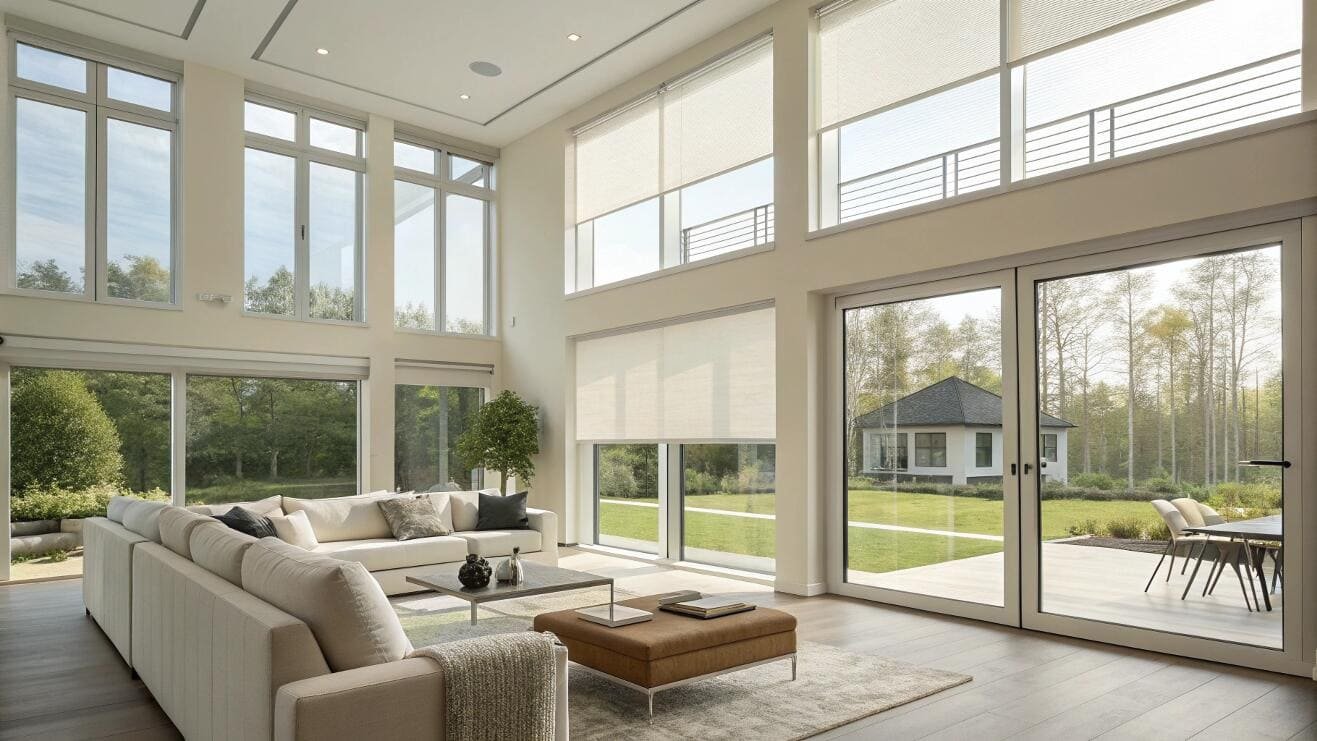You are ready to invest in the convenience of motorized blinds, but you hesitate. What if the motors fail in a few years, leaving you with a costly repair? This fear of a short lifespan and unexpected problems is a common concern for project buyers.
With proper selection and care, you can expect a motorized blind to last 5 to 10 years. Key factors influencing this lifespan include the motor type[^1], power source, frequency of use, and a simple maintenance routine[^2].

As a blinds supplier, I often talk with designers and contractors like Emma about the long-term value of motorization. It’s a significant upgrade, and you want to be sure it's a durable one. The technology in motors has improved dramatically over the last decade. They are more reliable[^3] and efficient than ever before. While they aren't invincible, understanding the factors that contribute to their longevity will help you make a smart investment that pays off for years to come. Let's walk through what you need to know.
What are the disadvantages of motorized blinds?
You love the idea of smart, automated blinds, but you need to know the downsides. What are the potential challenges that you should prepare for when planning a project with motorized blinds[^4]?
The main disadvantages of motorized blinds are the higher upfront cost compared to manual versions, their dependence on a power source[^5], and potential technical issues[^6] with connectivity or smart home integration[^7].

It's important to have a realistic view. While the benefits are huge, there are three key limitations to consider. First is the cost. The motors, controls, and often professional installation[^8] add to the project budget. Second is the dependence on power. Whether it's a battery that needs charging or a hardwired connection, the blinds won't work without electricity. Third, if you are integrating them into a smart home system, you may face challenges with Wi-Fi network reliability or the complexity of the setup. I always advise my clients to carefully weigh these factors. Planning for power access and understanding the initial investment are crucial steps to ensure the project is a success from start to finish.
How reliable are motorized blinds and do they break easily?
When you invest in technology, you expect it to work consistently. Are motorized blinds a reliable, long-term solution, or are they prone to frequent breakdowns that will cause headaches for your clients?
Modern motorized blinds are very reliable and do not break easily under normal use. Most issues that arise are not sudden failures but gradual signs of wear, most often related to the power supply or motor strain.

In my experience, complete motor failure is rare. The motors themselves are well-engineered, sealed units designed for tens of thousands of cycles. When a motorized blind stops working correctly, it's usually for a predictable reason[^9]. You might notice it starts running slower, makes a new noise, or stops responding consistently. These are your cues to do a quick check. Often, the cause is a depleted battery or a loose power connection. In other cases, it could be a sign that the motor is strained from lifting a fabric that is too heavy. This is why choosing the right motor for the blind's size and weight is so critical. With a proper installation and basic attention, these systems are a very dependable part of a modern home or office.
Battery vs. Mains vs. Solar: which power option lasts longer?
Choosing the right power source is critical for the long-term performance and maintenance of your motorized blinds. Which option will provide the most reliable service and last the longest?
Mains (hardwired) power offers the longest, most consistent performance, limited only by mechanical wear. Solar-assisted battery power[^10] is the next best for longevity, followed by standard rechargeable battery power.

This decision directly impacts how often you'll need to service the blinds. Each option has a different profile for maintenance and lifespan. A hardwired AC motor is a "set it and forget it" solution. It draws continuous power and its lifespan is only limited by the physical wear of the motor's gears, which can be over 10 years. A rechargeable battery motor is incredibly convenient for installation, but requires more attention. You can expect to recharge it every 6 to 9 months and replace the battery pack[^11] itself every 5 years or so. The best of both worlds is a solar-powered system. A small, discreet solar panel keeps the battery constantly topped up, making it virtually maintenance-free. I strongly recommend mains or solar power for very large or heavy blinds to avoid overloading a battery motor.
| Power Option | Maintenance Frequency | Expected Lifespan | Best For |
|---|---|---|---|
| Battery | Recharge every 6-9 months | Battery pack: ~5 years | Easy, no-drill installations; standard size windows |
| Mains (AC Hardwired) | Professional check every 3 years | Motor: 10+ years | New construction; very large/heavy blinds |
| Solar-Assisted | Virtually none | Motor: 10+ years | Hard-to-reach windows; maximum convenience |
How often do motorized blinds need to be recharged?
You have decided on battery-powered motors for their easy installation. Now you need to set realistic expectations for your client about how often they will need to be charged.
A typical rechargeable battery motor will need to be recharged once every 6 to 9 months. This is based on an average use of raising and lowering the blind once or twice per day.

The recharging cycle is one of the most common questions I get from project buyers. The 6-to-9-month figure is a solid baseline for most residential situations. However, this can change based on a few factors. If the blind is very large and heavy, the motor has to work harder and will use more power, leading to more frequent charging. Likewise, if the blind is in a room where it is operated many times a day—like a media room or office—you may need to charge it more often. The opposite is also true; a blind on a guest room window that is rarely used may hold its charge for over a year. The good news is that charging is simple. Most modern motors use a standard USB-C port, so you just plug it in for a few hours, and you're good for another several months.
How can you make motorized blinds last longer?
You want to ensure your investment lasts and provide your clients with blinds that perform flawlessly for a decade. What simple steps can you take to extend the life of the motors?
A simple 3-step routine can help your motorized blinds hit the 10-year mark: perform quarterly checks, avoid overloading the motor[^12], and plan for proactive upgrades to key components like batteries.

Making a motor last is all about proactive care. It’s not complicated. Here is the simple routine I recommend. First, every quarter, gently dust the blind and the headrail area to prevent dirt from getting into the mechanism. At the same time, check the power source. If it is hardwired, just ensure it's operating smoothly. If it's battery-powered, check that the connections are clean. Second, make sure you are not overloading the motor. If you have a very heavy blackout fabric or an oversized blind, it really needs a stronger mains-powered or solar-assisted[^13] motor. A strained battery will fail much faster. Third, be proactive about components. After about 5 years, if you notice performance dipping, a new battery pack is a small, inexpensive upgrade that can restore the blind to full power. This is much more cost-effective than waiting for a complete failure.
How are motorized blinds priced?
You need to create a budget for your project and understand how suppliers calculate the final price. What is the formula for determining the cost of a complete motorized blind system?
The total price of a motorized blind is calculated by combining the cost of the fabric, which is priced per area, with the fixed cost of the motor and its controls.

When I create a quote for a project, I break it down clearly so you can see exactly what you are paying for. The formula is: Motorized blinds price = fabric unit price × area + motor price. The fabric is the variable part. A standard light-filtering roller fabric might be one price, while a high-performance, energy-efficient[^14] honeycomb fabric will be another. This is calculated per square meter or square foot. The motor is a fixed-price addition. For example, a standard battery motor might add $60 to the cost of the blind, while a stronger one for a larger shade could be $80. This pricing structure[^15] gives you flexibility. You can choose a more economical fabric for one area and a premium one for another, all while using the same reliable motor technology.
When should you service a motor versus upgrading it?
Your client's motorized blind is acting up. It's slow and noisy. How do you decide whether to call for a simple repair service or recommend a full upgrade of the motor unit?
You should service a motor at the first sign of trouble, like noise or slow operation. You should upgrade it when a simple fix like a new battery doesn't work, or when new technology offers a significantly better experience.

This is a practical decision that balances cost and performance. If a blind that is only a few years old starts running slow, the first step is to service it. This usually involves checking the power source and ensuring the mechanism is clean and unobstructed. Most often, a recharge or a new battery solves the problem. However, if the blinds are over 5 years old and a new battery doesn't help, it's time to consider an upgrade. Technology improves quickly. A new motor might be significantly quieter, faster, or offer better integration with smart home systems. Often, the cost of a new motor unit is only slightly more than the cost of trying to source old parts and pay for a complex repair. Upgrading becomes the smarter financial choice for long-term reliability.
Conclusion
Motorized blinds are a reliable, long-term investment[^16]. With a lifespan of 5-10 years, they offer incredible convenience, and an easy maintenance routine[^2] ensures you will enjoy them for their entire functional life.
---
[^1]: Learn how different motor types can influence the durability and performance of your blinds.
[^2]: Find out how a simple maintenance routine can extend the life of your motorized blinds.
[^3]: Get insights into the reliability of modern motorized blinds and their performance.
[^4]: Explore the advantages of motorized blinds to understand why they are a worthwhile investment for your home.
[^5]: Discover the most reliable power sources for motorized blinds to ensure long-lasting performance.
[^6]: Learn about common technical issues with motorized blinds and how to troubleshoot them.
[^7]: Explore potential challenges of integrating motorized blinds into smart home systems.
[^8]: Get insights into the installation process of motorized blinds to prepare for your project.
[^9]: Understand the common, predictable reasons for motorized blinds malfunctioning to prevent issues.
[^10]: Learn about the recharging frequency for battery-powered motorized blinds to set realistic expectations.
[^11]: Find out when to replace the battery pack in motorized blinds for optimal performance.
[^12]: Understand the risks of overloading a motorized blind's motor and how to avoid it.
[^13]: Explore how solar-assisted motorized blinds can provide a maintenance-free solution.
[^14]: Discover the advantages of energy-efficient motorized blinds for your home.
[^15]: Learn how the pricing structure for motorized blinds is calculated to help with budgeting.
[^16]: Explore why motorized blinds are considered a reliable long-term investment for homeowners.
Partner with VelaBlinds for Your Next Project
Smart window treatments shouldn't be complicated. After working with 500+ distributors and contractors worldwide, I've streamlined the process to get you quality products, competitive pricing, and reliable support - every time.
Why project professionals choose VelaBlinds:
- ✅ Fast, Accurate Quotes - Detailed specs and pricing within 24 hours
- ✅ Transparent Pricing - No hidden fees, volume discounts clearly outlined
- ✅ Quality Assurance - Direct partnerships with certified OEM manufacturers
- ✅ Project Support - Dedicated account manager from quote to delivery
Start your next project:
📧 Quick Quote: Send your requirements to info@velablinds.com
📱 Direct Contact: WhatsApp +86 137 2012 8317
🌐 Browse Solutions: https://velablinds.com/
📁 Product Resources: Access spec sheets, catalogs & project files
Paul Chen, Founder
"I built VelaBlinds to solve the real challenges I faced as a project buyer - long lead times, unclear specs, and unreliable suppliers. Let's discuss how we can power your projects with smarter blinds."
Serving distributors and contractors across North America, Europe, and Australia since 2018.




